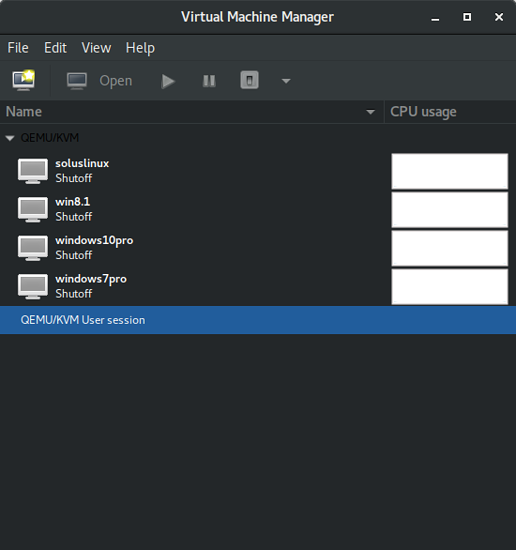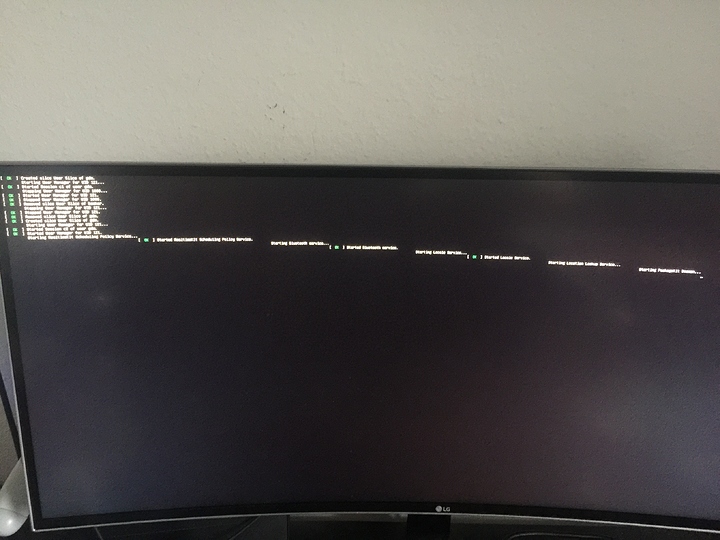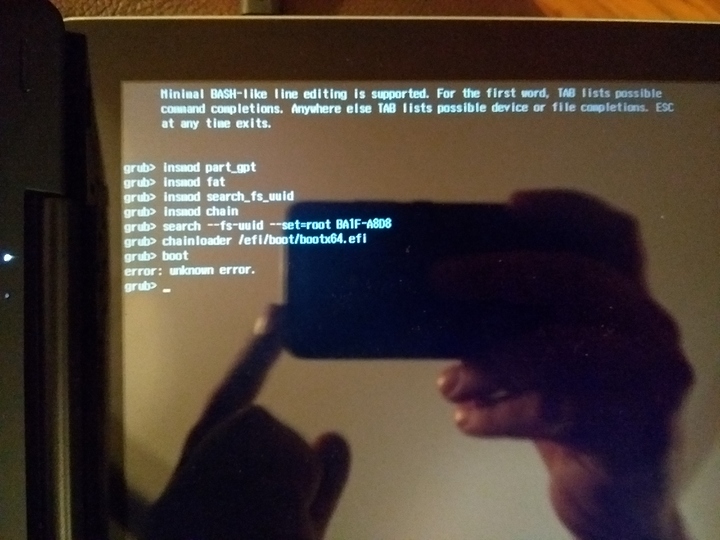Cheers will have a look at see how it goes.
Anyone know if there’s an easy way to move a VM from the default QEMU/KVM connection (where you have to put in a password every time you start virt-manager), to the user session connection (where you don’t have to put in a password)?
I’ve been dealing with it for quite a while now, and I’d just like to fix it. Bugs me.
Only way I can see how to do it is to make a copy of the config file, delete the VM from the default connection, make a new VM with the container attached, copy the contents of the original config file to the new one, make a few adjustments maybe, and hope it works. Sounds like a lot of work and a large margin for error.
I’m not even sure if the VM will work correctly using the user session connection, with pci-passthrough and using a bridge network connection.
I have an SFTP server running on CentOS 6.8. In this share, I also have a yum repository. Is there a way to log IP addresses hitting just the specific folder the YUM repo is in, while not logging IP’s grabbing other files?
I just want to know how many people are using it, to see if the maintenance is justified.
I don’t know if there is a better way, I have limited exp with sftp.
you should be able to use User based chrooting to lock group A to the repo, and group B to the other files. now you can log just group A and not B. Keys can be the same for both groups or different, whatever you want
The entry in /etc/default/grub is the actual configuration file. The grub.d/ folder structure allows you to make separate scripts that get rolled up when invoking grub-mkconfig.
The default/grub file can have multiple entries. Just make another entry by copying the first, make your changes and label accordingly.
Wait… Do you mean copy one of the entries from /boot/efi/EFI/fedora/grub.cfg, paste it in /etc/grub.d/40_custom, and make the needed modification?
Hey there. I tried Ubuntu 17.10 yesterday. After some time getting into it today it booted like this:
I haven’t found info on how to repair services. Any ideas?
Edith: it seems like the Location Look Up Service isn’t coming up. The fact that the boot text slides way off… I have the feeling that something with the driver isn’t quite right. But then again… no problems with VGA in most distros.
Essentially, yes. Here is and example
menuentry “Super Debian Fun Time!!!1!YAY!”
{
set root=(hd0,2)
linux /vmlinuz root=/dev/sda2 ro quiet splash your kernel options for isolation
initrd /initrd.img
}
This will look different for EFI. The key part is that on theb"linux" line is where you will add your kernel options. Be sure to run grub-mkconfig specifying the correct boot location to write the file.
Put an edit as discourse used my pointy brackets as html and hid them the italics is what your kernel options like that, each option separated by a space.
Running a Nvidia card?
Also is this the fixed 17.10 or the broken one that has bricked some motherboards?
Usually you boot looking like that is no BFD. I get that sometimes in Debian SID when a systemd package is updated before some of the other related packages are updated.
This should not be related to whether a services us starting up, failing, or stopping. It is just a graphical glitch. I run an all AMD box by the way. It is truly vendor agnostic.
I will admit that this isn’t really a Linux Question per-say, but it does involve using NFS and sharing it between a Linux host (Fedora) and a Windows/Mac guest only.
I hope these question below make sense, I have never really dig deep into networking before…
Question #1: When it comes to isolating a network application (such as NFS) to a certain bridge (such as br0 for example), do you basically tell your firewall to block the port that the application is using for everything except br0, right?
Question #2: Let say that my desktop is connected to the school network that has a lot of devices connected to it, and I also have a bridged connection set up between the guest VM and host that uses a static IP.
Is there going to be a situation where the private IP from the school 's network happens to be the same as the private static IP I assigned to the bridged connection?
How about this?
I decided to try Fedora on a Lenovo Miix 300 tablet. It doesn’t work very well, so I was trying to install Windows 10 again, but USB devices don’t show up in the F12 boot menu anymore. I just get two Fedora entries.
So I was attempting to boot to the USB via GRUB, but it doesn’t work, throwing the error in the picture above.
Usually, the EFI vars will have an entry for each UEFI aware device that has been “installed”.
If it is not there, you may have to actually log into UEFI Shell (should be doable in the UEFI/BIOS) and you would need to navigate to the USB drive. UEFI shell should give you a better error message.
I think that the issue right now is that you are booting an image that points to a nonexistent partition or WinTel Secure Boot is preventing access to external devices because they are not signed.
How do i make sure i can upgrade my kernel without breaking nvidia drivers? Using fedora 25, installed drivers from rpmfusion. Often times i have a problem where i update my kernel and the drivers break, from what i researched this is caused by kmod/akmod drivers not being ready for that new kernel i just updated, but i didn’t know how to prove or disprove that, or what to do if it was the case.
You can look this up at the NV site by reading the change log. Don’t upgrade until they state that they officially support your kernel.
Anybody know of a FOSS application that runs on Linux and uses Apache Tomcat?
I want to learn more about Apache Tomcat. Any suggestions?
Red Hat’s JBoss system uses Apache.
You could also just setup apache to host an internal website and go through the tutorials.
I am having terrible luck with using my Nvidia GPU on Fedora 27, It uses to work with Fedora 26 perfectly*. I used the rpmfusion method to install the NVIDIA drivers but my system defaults to the Nouveau driver, despite it being blacklisted in the boot option. Using nvidia-xconfig only made things worst (stuck on boot screen)…
Has anyone else had similar problems and a solution to this problem?
*Well… sometimes I did have very long boot times, but the driver still worked.
Have you verified that the current NV driver is compatible with the currently kernel you are running?
You can do that with a uname -a at a terminal. The look at the NV driver release notes.
It is very possible that you are getting nouveau because the NV driver cannot be loaded or the nouveau KMS/DRM driver is being loaded before the NV DKMS can be loaded.


